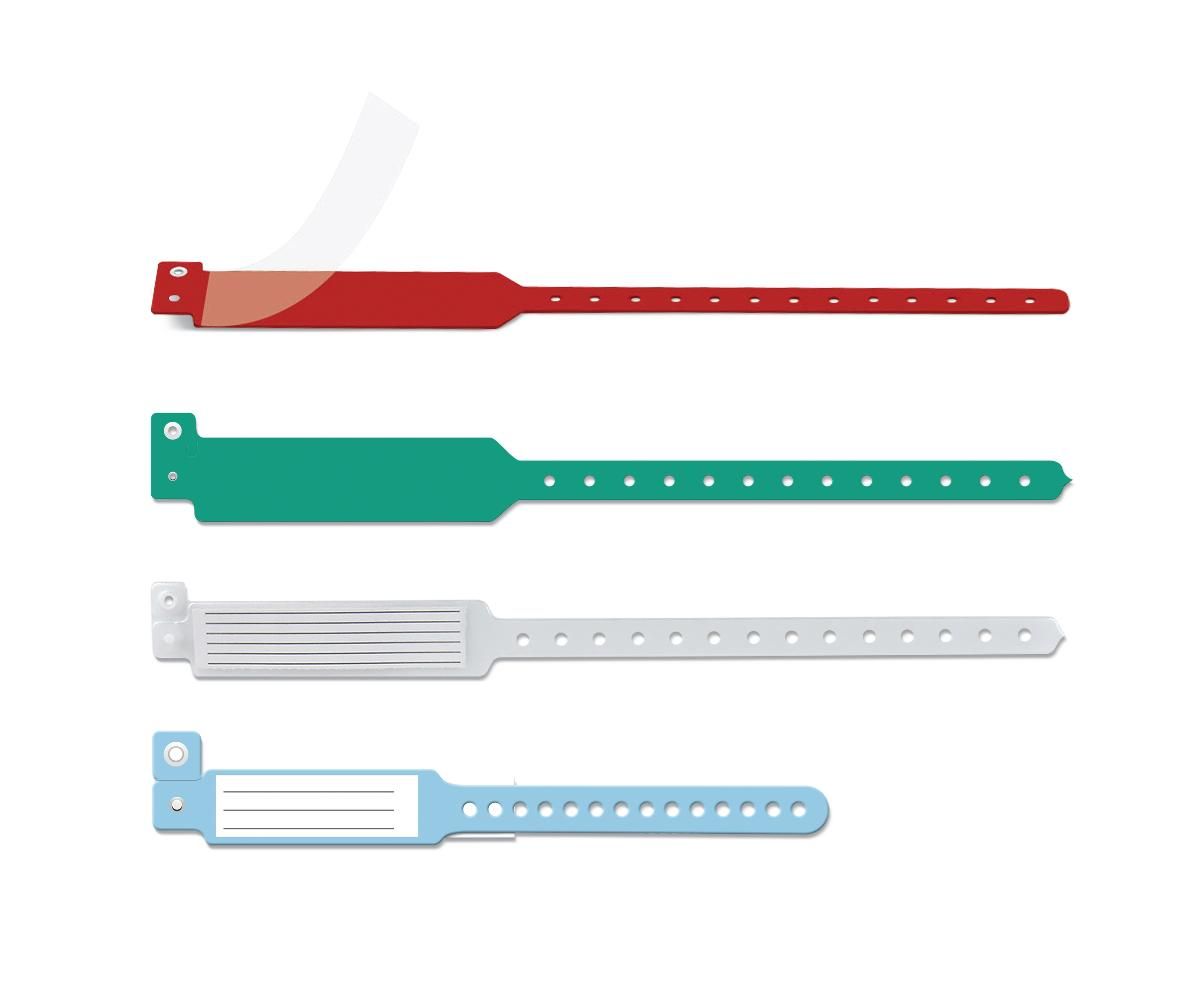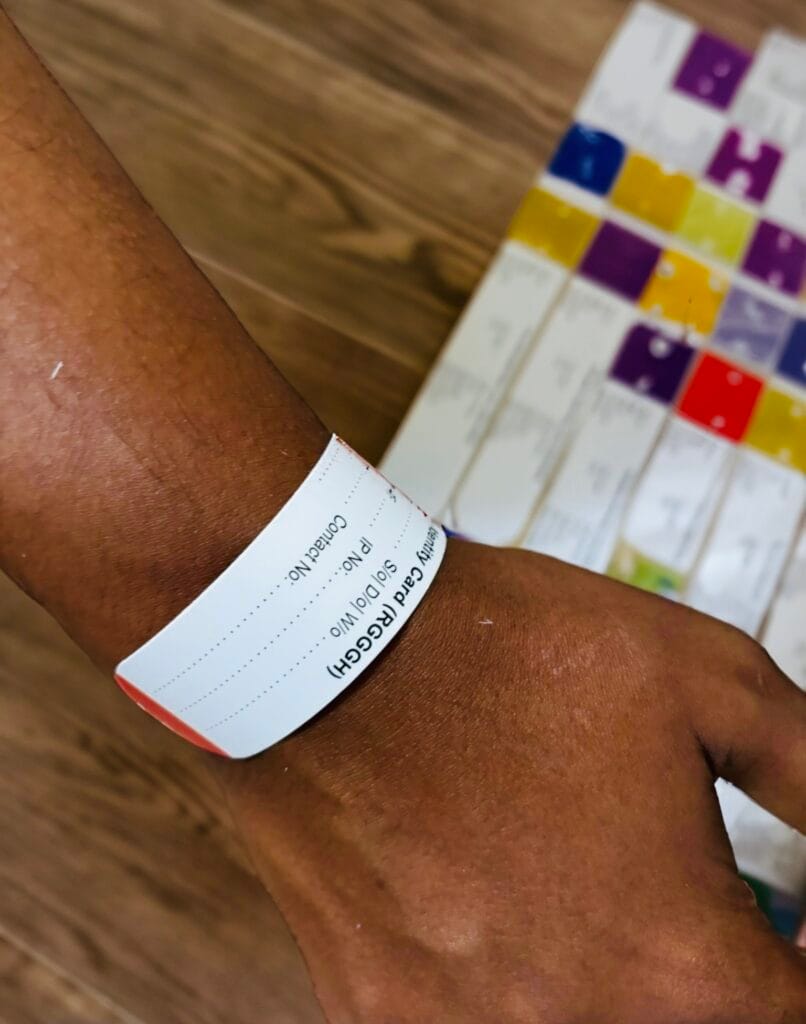Enhancing Safety And Security: The Importance of Client Recognition Bands in Healthcare
In the realm of healthcare, the efficiency of person recognition bands can not be overstated, as they serve as a basic secure versus misidentification and subsequent errors. As we discover the complex function of these bands, it becomes evident that their importance expands past simple identification, elevating concerns about ideal techniques and future technologies in person security.
Introduction of Individual Identification Bands
Individual identification bands play a vital role in guaranteeing the safety and precision of client treatment in health care settings. These bands, commonly used on the wrist or ankle joint, act as a critical device for verifying person identity, therefore decreasing the danger of errors in therapy, medication management, and other medical care procedures. Made from resilient materials, person identification bands usually include crucial information such as the person's name, date of birth, medical document number, and barcodes or QR codes for scanning.
The implementation of individual identification bands is crucial in numerous health care settings, including medical facilities, outpatient centers, and long-term treatment institutions. They add to an organized approach in individual monitoring, enabling health care specialists to quickly and precisely recognize people, specifically in high-pressure situations where quick decision-making is crucial.
Furthermore, using these bands is lined up with regulative requirements focused on boosting person security - Patient Identification Band. By ensuring that each patient's information is easily proven and conveniently available, healthcare carriers can keep a high requirement of care, lower the occurrence of adverse events, and foster a society of safety within healthcare institutions
Advantages of Accurate Identification
Precise identification is basic to enhancing patient safety and security and care top quality in medical care setups. It serves as the very first line of protection versus errors that can bring about damaging patient results. By making sure that each person is correctly determined through trusted methods, such as person identification bands, doctor can significantly reduce the risk of misidentification, which can cause unsuitable therapies, medicine errors, and even surgical mix-ups.
Furthermore, exact individual identification promotes efficient interaction amongst health care groups. When all team member can consistently recognize individuals, they can share critical information more successfully, bring about better sychronisation of care. This is particularly essential in emergency situation circumstances where prompt interventions are critical.
In addition, exact recognition sustains compliance with regulative criteria, thereby minimizing the threat of lawful consequences for medical care centers. It fosters count on between individuals and medical care carriers, as patients feel much more safe recognizing that their identifications are being safeguarded.

Common Obstacles Faced
Making certain efficient patient identification in medical care settings offers a variety of difficulties that can compromise security and care quality. One considerable obstacle is the variability in client populaces. Clients might arrive in a state of confusion or distress, making precise recognition challenging. Furthermore, language obstacles can prevent effective communication, making complex the confirmation process.
An additional challenge is the reliance on human consider identification treatments. Medical care specialists might unintentionally forget or misunderstand recognition methods, particularly in high-stress environments such as emergency departments. This can result in errors, including the administration of incorrect therapies or medicines.
Technical concerns also position difficulties. Electronic health document (EHR) systems are developed to improve patient identification, system outages or customer mistakes can interrupt the process. The physical design of person ID bands can lead to readability concerns, particularly in cases where bands are damaged or covered.
Finally, inconsistent training amongst personnel concerning identification methods can lead to voids in understanding and practice. Addressing these obstacles is vital for improving patient safety and security and guaranteeing that identification bands offer their designated objective Read Full Report properly.
Finest Practices for Implementation
To successfully implement individual identification bands in health care settings, organizations should take on a diverse approach that prioritizes standardization, training, and technology combination. Standardization entails establishing clear methods for the design, application, and usage of recognition bands throughout all departments. This makes sure uniformity and reduces the danger of mistakes linked to variations in band kinds or labeling techniques.


Training is vital for all healthcare team to ensure they recognize the significance of accurate client recognition, how to effectively review and apply recognition bands, and the procedures to comply with in case of inconsistencies. Regular workshops and correspondence course can strengthen this expertise and promote a culture of safety and security.
Technology assimilation plays an essential duty in improving the effectiveness of client recognition bands. Utilizing barcode scanning or RFID technology can enhance the identification process, permitting real-time verification of client identifications. see Additionally, electronic health and wellness document systems should be set up to include informs for inequalities in between the identification band and client information.
Future Trends in Person Safety
As healthcare remains to advance, the emphasis on client security is most likely to magnify, driven by innovations in modern technology and a greater understanding of systemic risks. Emerging patterns suggest a shift in the direction of even more incorporated systems that utilize information analytics, expert system, and artificial intelligence to enhance client identification processes. These innovations can assist determine prospective security problems before they intensify, thus decreasing errors connected with misidentification.
Furthermore, the application of blockchain innovation may revolutionize how patient information is firmly click here to read shared amongst medical care suppliers, making certain that identification bands are consistently accurate and current. This will not just boost individual security but additionally facilitate smooth interaction throughout multidisciplinary teams.

Furthermore, the growing concentrate on customized medicine is expected to influence individual safety and security methods. By incorporating genetic and demographic information into identification systems, healthcare professionals can tailor treatments much more efficiently, lessening the threats of damaging responses as a result of misidentification.
Verdict
In verdict, person recognition bands offer as an essential part in improving security within health care environments. By helping with precise client identification, these bands significantly reduce the risk of errors related to misidentification, unacceptable therapies, and medicine administration. Despite obstacles in application, adherence to best practices and the assimilation of emerging technologies can further boost their efficiency. Ultimately, the ongoing emphasis on robust recognition procedures will add to enhanced patient end results and overall safety in medical care settings.
In the world of healthcare, the effectiveness of patient recognition bands can not be overemphasized, as they serve as a basic protect versus misidentification and succeeding errors.Individual identification bands play an essential function in guaranteeing the security and precision of client treatment in medical care settings. Made from long lasting products, patient identification bands frequently consist of crucial details such as the patient's name, day of birth, medical document number, and barcodes or QR codes for scanning.
By guaranteeing that each individual is appropriately identified with trusted means, such as individual recognition bands, health care carriers can considerably lessen the threat of misidentification, which can lead to unsuitable treatments, medicine errors, and also medical mix-ups.
In verdict, person recognition bands offer as a vital component in enhancing safety within health care atmospheres. Patient Identification Band.
Comments on “Improve Patient Treatment with the Reliability of a Patient Identification Band”